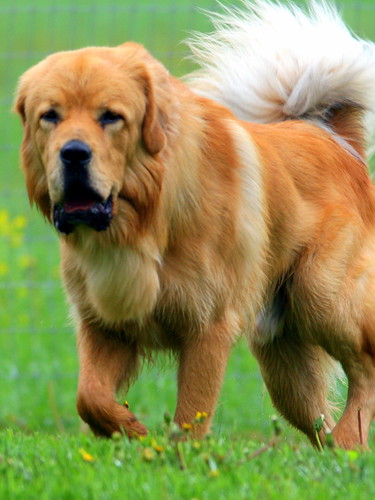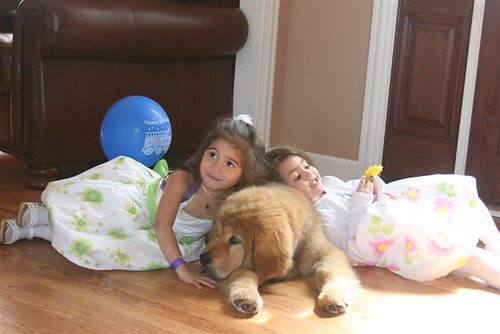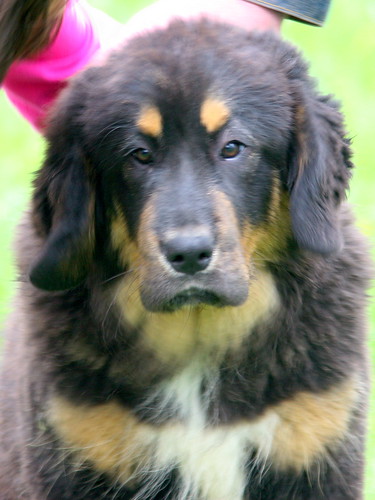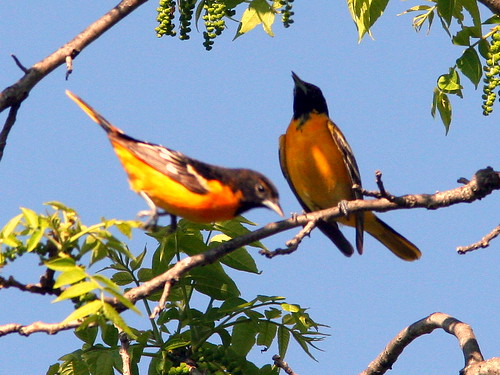Our Illinois daughter’s family dog is a golden Tibetan Mastiff named Agramonte. He is now 17 months old and is a wonderful companion for their two small children. An ancient breed, Tibetan Mastiffs retain some features of ancestral wild canids. They mature slowly, taking about 4-5 years to attain full size. They also go into estrus only once a year, and have a rich undercoat that is shed all at once in the spring. This means that they do not release dander into the air for about 11 months of the year, so they are considered to be “hypoallergenic.” This was an important consideration in selecting this breed, as one of the children suffered severe allergies from their previous pet, a Dobie-Lab mix named Maceo. The sad story of Maceo’s last days is detailed here: Losing a Best Friend
Agramonte, at four months of age, with las Nietas:
Agramonte, true to his breed, is intelligent and placid, but stubborn. In Tibet, where they are sometimes chained all day and released to roam at night, they are known as vicious guardians of the villages. Happily, the family took great pains to socialize him with other dogs and also people of all ages, so his protective instincts are tempered. He enjoys the company of the children, and does not protest when they climb all over him. Even though he now weighs over 100 pounds (and may put on 30 to 40 more) he exhibits some adolescent traits, such as making off with shoes and toys, to the delight of the children and consternation of their parents.
Agramonte accompanying the girls on a nature walk: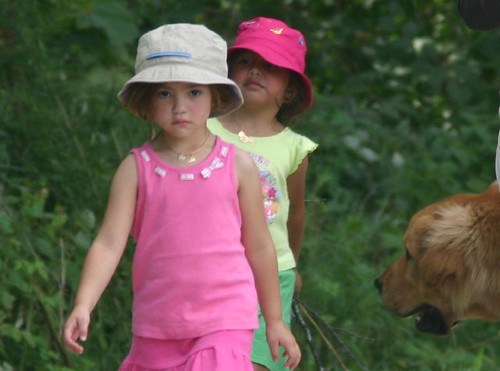
When we are in Illinois, I frequently take Agramonte for walks, something he eagerly anticipates. We often stroll through a nearby streamside park with wood-chip paths that loop into a forested area, great bird habitat. When Agramonte walks, he likes to keep moving, tugging on his leash while I am trying to look through my binoculars. My solution has been to stand on his leash while I birdwatch, trying to ignore his tugs and impatient whining. Finally, he accepted my disturbing habit, and learned to simply lie down and rest, a skill that seems to be perfected in this breed. When a Tibetan Mastiff decides to lie down, few forces on earth can make him get up and get going again!
Sagua at 4 months:
Well, all this has changed, as his masters believed that it was not good for him to be alone. Last week, we drove up to Wisconsin and picked up a four month old female, a black and tan named Sagua (actually Washanti’s Ermita de Sagua la Grande, named after the little church in our son in law’s home town in Cuba). The two dogs get along famously, and play to the point of exhaustion. Agramonte has already lost most of his mischievous traits. It took Sagua a few days to get used to the leash, but now she leads the way and has no respect for my desire to make frequent stops. I’ve found it easier to just leave the binoculars at home when Sagua accompanies us into the woods!
Agramonte caused this distressed Killdeer to go into a distraction display as we unknowingly walked near its nest:
I went back later and found its four eggs, only a foot from the edge of a manicured lawn: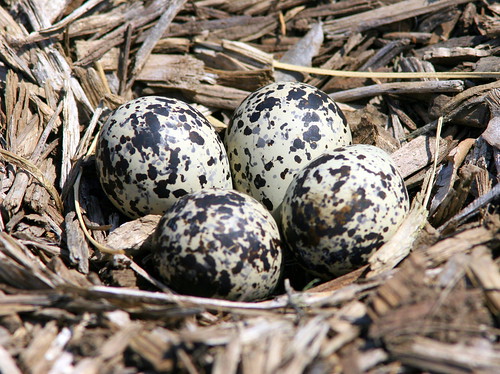
We have tried to squeeze as much spring migration birding into our schedule before departing. Walks in local nature area (sans dogs) have produced some images of representative species.
Sedge Wrens are claiming territories in the meadows at Nelson Lake Forest Preserve in Batavia, IL:
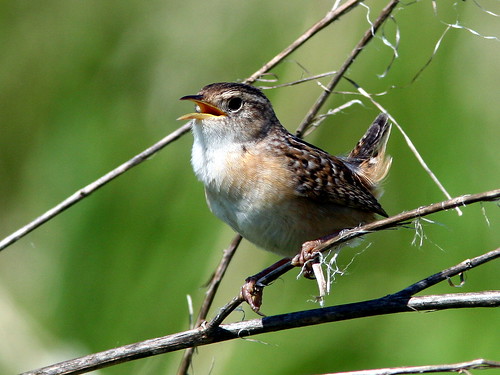
Nearby, a Rose-breasted Grosbeak sings his heart out:

Competing Baltimore Orioles display to each other as females look on:













